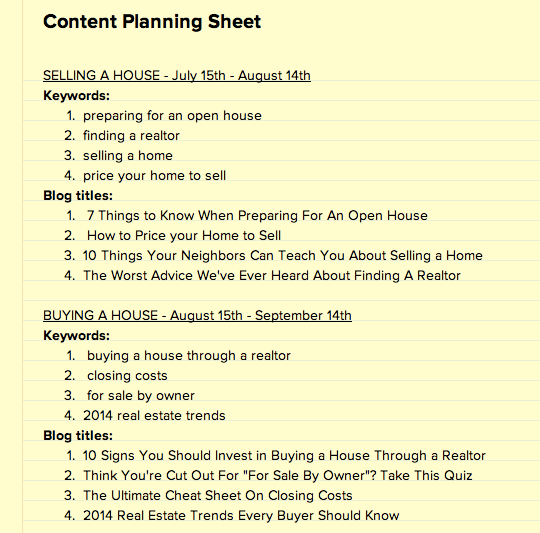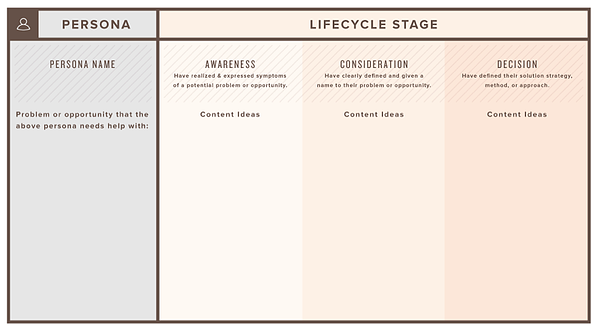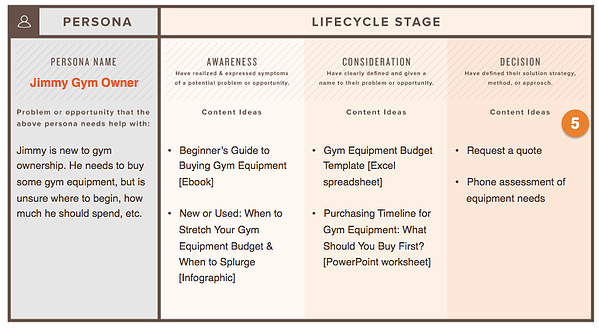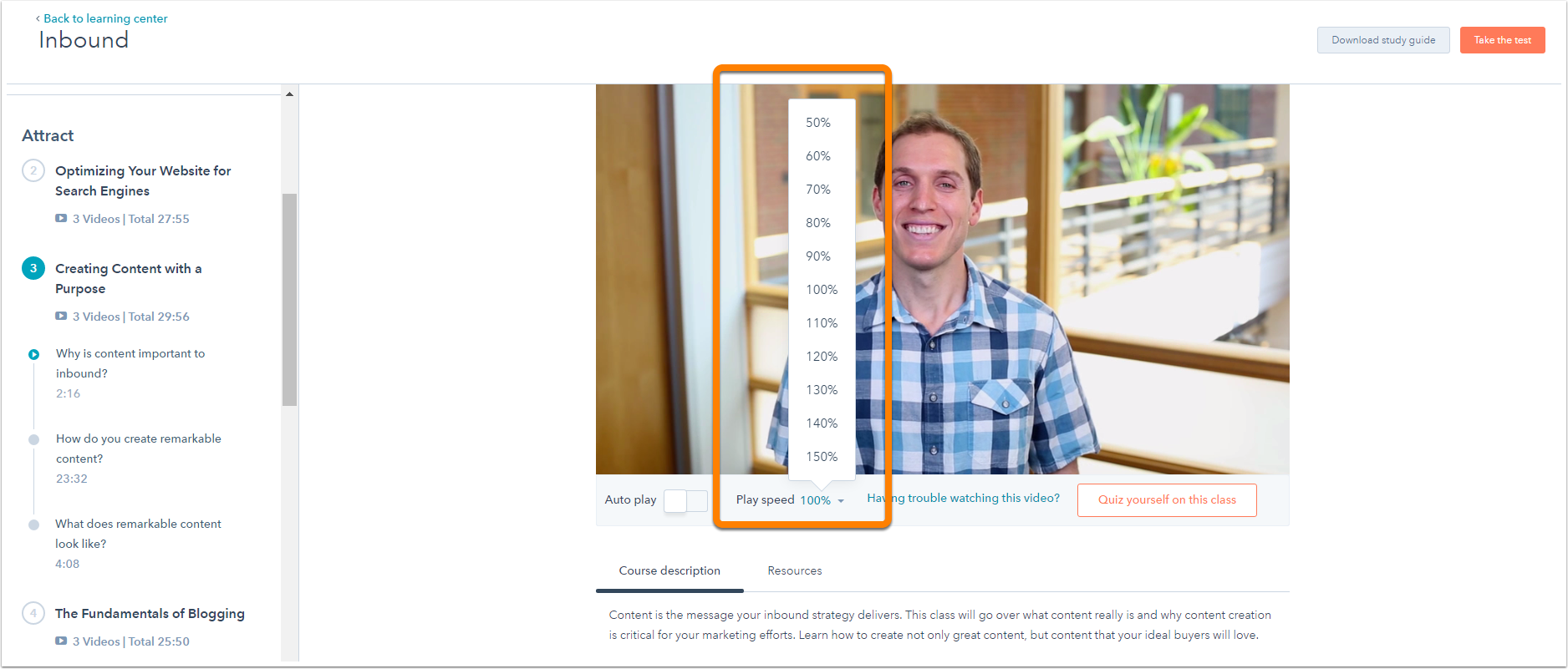 As a marketing team of one it can definitely be tough to stay on top of everything. In addition to everything else you may be working on -- tradeshows, paid search or print ads -- inbound marketing needs a some attention each week in order to drive results. From scanning your news feed for the latest best practices and shortcuts, to publishing fresh content and establishing yourself as a thought leader, you simply have a lot to do!
As a marketing team of one it can definitely be tough to stay on top of everything. In addition to everything else you may be working on -- tradeshows, paid search or print ads -- inbound marketing needs a some attention each week in order to drive results. From scanning your news feed for the latest best practices and shortcuts, to publishing fresh content and establishing yourself as a thought leader, you simply have a lot to do!

First things first, take a deep breath. Okay. Now, ask yourself one question, “What are you currently spending your time on?” Be honest. If you feel like inbound is taking way too much time, you may be falling victim to one of two things.
- You are spending more time thinking about your marketing than you are actually doing it. Unfortunately, this won’t help drive results or ROI.
- You are focusing on the wrong activities to the results you want. This is also not good.
To be successful with inbound marketing, it’s essential to be conscious of how you are spending your time. Once you can do that, you are on your way to being a more productive inbound marketer. With such awareness of your time spent, it is easier to decide what to stop doing, what to start doing and what to continue doing.
Before we can reach inbound marketing bliss, let’s talk about the habit-breaking and habit-making that can get us there.
1. Keep Track of Time Spent on Training & Research
When you are getting started with inbound marketing, you can expect a significant portion of your time to be allocated to learning and training. In general, we find that most single-marketer teams are most successful when they spend a minimum of 5hrs/week on their inbound marketing. At the beginning, while you are still getting your feet under you, that will likely translate to 30-40% of your time on training and 60-70% of your time on completing the work. Once you are feeling more comfortable, the training time usually shrinks and the time you have to complete work grows. It is unlikely you will need to watch the training videos each time you complete a marketing task once you develop some muscle memory.
Hold yourself accountable to the time you plan to spend educating yourself before completing a task. Knowing you have a limited amount of time to research and learn means you are more likely to stay focused on the task at hand. When researching inbound marketing it is easy to go down a rabbit hole of article after article. Before you know it, you are trying to remember what you were looking for to begin with. We’ve all been there. However, cutting back on the seemingly endless hours spent reading articles, watching webinars and searching for the latest and greatest tips can take a giant load off your shoulders.
To master this, you can put the time on your calendar for training, researching and completing work, separately. Alternatively, you can use a tool such as toggl.com or a project management tool like teamwork.com
Takeaway: Cap your time spent on the training and researching portion of your day to maximize the time spent actually executing on your to-do list.
2. Plan Ahead
If you are already setting aside time to plan ahead with your marketing, give yourself a pat on the back - this can be tough to stick to! If you are not yet scheduling planning sessions, it’s time to start. A planning session is not just designed to help you plan out your blog titles for the next 4 weeks, but also to give you an opportunity to see what has been working and what has not.
As a one-person marketing team, your calendar can be your new best friend. The first step is to block off time on your calendar each month. This is the easy part. The second, and harder, step is respecting the time you've scheduled for planning and not letting that turn into time for catching up on emails. Use this time to plan out your top priorities. I recommend focusing on the following three things but, there may be others you need to address based on your goals.
Blog Calendar
No matter what your goals are, growing your organic traffic through blogging is a critical piece of your strategy. Many inbound marketers forgo planning blog content in favor of flexibility and spontaneity. Unfortunately, that usually translates to inconsistent posting and a lack of focus with the content.
Instead, break your content into two categories, (1) targeted content and (2) supplementary content. The targeted content will usually revolve around any campaigns you are running at that time. If you are not running any campaigns, choosing a monthly theme for your content is a great way to stay focused. With your campaign or your theme in mind, select approximately 4 long-tail keywords that relate to that topic. You can enter your keywords into the Blog Topic Generator to get title ideas. Make note of the ones you like best and keep them in a Google Doc or other planning tool so you know what blog posts you have coming up for the next month. Your plan might look something like this:

The supplementary content is there to round out your blogging strategy and factor in spontaneous ideas you want to write about in addition to your campaign or monthly theme. Examples of this supplementary content could include industry news, responses to current events, posts targeting a secondary persona or answers to frequently asked questions.
If you have an idea of what supplementary articles you will want to write, make note of those topics during your planning time. Knowing in advance what topics you want to write blogs about will give you the opportunity to collect information prior to writing the post, alleviate the pressure of deciding what to write about (especially when you have to publish a post by the end of the day!) and may even give you the opportunity to delegate to others in the company.
Conversion Content
Creating fresh downloadable content on a regular basis is the best way to continue growing the number of leads generated, month-over-month. While the frequency for publishing new content offers may vary for many businesses, spending a little time working on your offers each month can help make a difference. For some, publishing a new content offer every two months is enough to generate results. For others, a higher frequency of once or twice a month will be necessary to see the desired growth.
Take the time to write out your content plan for each of your personas to ensure at each stage of the buyer’s journey, they will have content to keep them engaged. Some marketers like to use a spreadsheet while others prefer templates like this one:

Once filled in, your content plan might look something like this:

Even if it could take months to get all of this content ready, by planning in advance and reviewing your plan monthly, the overwhelming feeling of needing to get a content offer out the door can be minimized.
Time to Analyze
How often are you setting aside time to analyze the results of your efforts? If you are unsure, it could be because there is no rhyme or reason to your analytical madness.
Regardless of the frequency you need to stay up to date on your data, try setting up a report in HubSpot, under “Reports Home”. This custom report can be emailed to you, or anyone you may need to share your data with on a daily, weekly or monthly basis.
Additionally, it may be worthwhile to block 30-60 minutes off on your calendar to make sure you are not overlooking your data. Just as important as planning, understanding if certain marketing efforts are not performing as strongly as you had hoped or are simply failing will allow you to take the time to remedy them.
For example, if you have been spending time and money on AdWords but haven’t been getting anything out of it, this month can be the month to focus on turning that around through the use of landing pages and tracked URLs. Without taking a moment to plan on improving AdWords, your efforts have the potential to be more sporadic and less impactful.
Takeaway: Make planning a priority so your time allocated to completing work can be just that. In other words, it takes longer to write a blog post when you spend half of your "blogging time" deciding what to write about.
3. Get Comfortable with the Imperfections
Worrying about publishing only the most perfect marketing pieces? Give yourself a break! For many marketers, aesthetic perfection in the final product of their work is almost non-negotiable. That might make this hard to hear, but seeking perfection is the top killer of being productive.
Now, to be clear, I am not suggesting marketers everywhere begin publishing sub-par or half-completed work, just for the sake of it. However, keep in mind, you are the toughest critic of your own work. So, while something may feel unfinished because you feel like you could’ve written a couple extra pages for your eBook or you want to wait to publish your blog until your call-to-action is 100% perfect or you’ve searched for your dream picture for your blog, your readers don’t know that. They are looking for content that can help them reach a goal, overcome an obstacle or improve a daily task, today.
Takeaway: Take the time to read over your work to see if it makes sense. Spot-check your calls-to-action and cover pages by asking someone else to take a quick glance. But be careful treading water, aiming for “perfect”, and remember to actually take your content live!
4. Organize Your Inbox
These days, there are many theories about improving email and inbox productivity. No matter what methodology you believe, what's most important is that your inbox works for you, but does not dictate your day. Grouping content together by type, and even going so far as to setup filters, can alleviate the crippling feeling of a growing inbox and way too much content to feasibly read in one day. This also allows you to find your content when you have the time to digest it, not necessarily the second it appears in your inbox.
In my email, I have folders setup for each of the following email types:
- Get to today (the most important stuff)
- Get to this week (important but, not urgent)
- On-going projects (resources and messages related to on-going tasks)
- Product updates and helpful articles (not to be read right away but, there when I need to reference the information)
This way, when I have the time to spend on educational content, or even a few minutes between meetings, I know exactly where to go.
Another tool that can be helpful is the GMail Pause Inbox plugin for Chrome. It allows you to pause your inbox from showing new messages while you are busy. When you are ready to go through your mail, you can unpause and everything appears again.

Takeaway: Make sure your inbox works for you and is not detrimental to your daily productivity. An organized inbox can go a long way.
5. Know Your Limits
Acknowledging your bandwidth limits is a very important step to being a successful one-man marketing team. In some cases, it might be physically impossible to get everything done in a day. And that's okay. It doesn't mean you are a bad marketer. The sooner you are able learn your limitations, the sooner you can start finding ways to solve for them.
For some marketers, outsourcing blog content through a content network, is a better use of their time. Generally, this involves submitting topics to be written first. Then, once they are sent back to you for review, editing the post(s) and publishing them. You can use a network like Zerys to have these posts written. As a bonus, if you find a writer you like, you can continue to submit to them directly.
Interns are also an option when it comes to getting help with your marketing. However, if you have never run an internship program or worked with interns before, this can take quite a bit of work at the outset. Be conscious of the time you have to delegate - the last thing you want is to make more work for yourself!
Takeaway: Be realistic about what you can and cannot get done. If there are things that are taking up "too much" time, consider outsourcing them to someone else.
Spending time today, planning, prioritizing and organizing for tomorrow, will save you a lot of time when it comes to actually creating and publishing new content, pages and emails. In doing so, it becomes easier to stay focused and make your marketing actions count. See? You can be a marketing team of one and still be a marketing hero.










